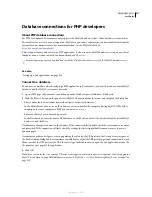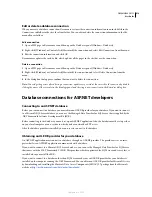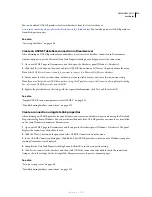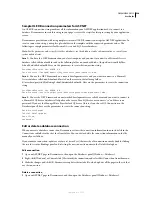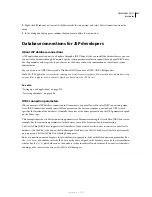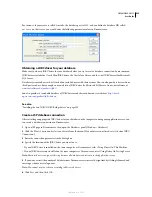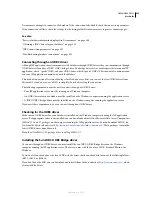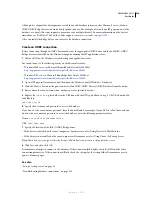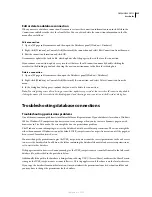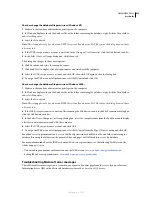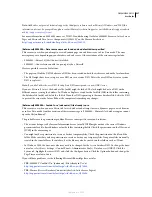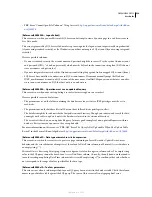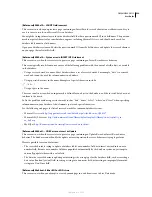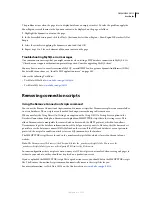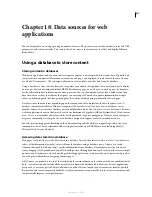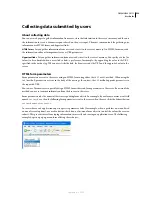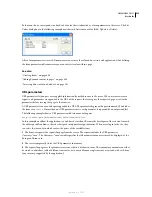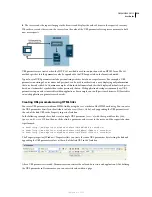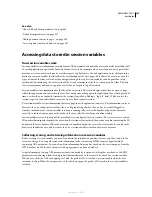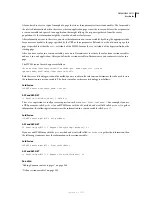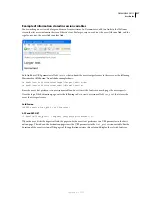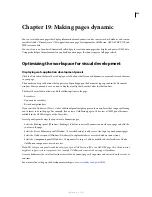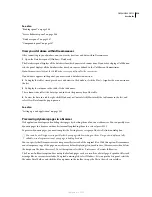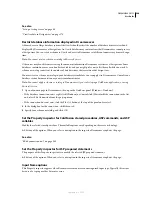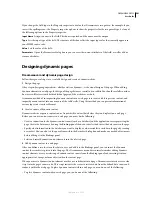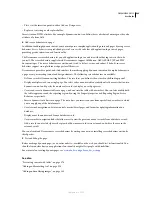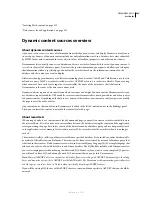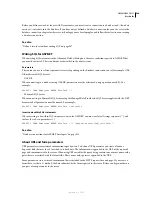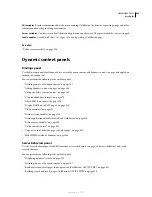
531
Chapter 18: Data sources for web
applications
You can display data on a web page using a number of sources. These sources can include databases, form and URL
parameters, and session variables. You can use these data sources in various ways to collect and display different
kinds of data.
Using a database to store content
Storing content in databases
Web-based applications and dynamic websites require a content source from which to retrieve data. Typically, data
consists of text or numerical information returned to a web page, and displayed in some form to the user. You can
use Adobe® Dreamweaver® CS3 to design web forms to insert, update, or delete data from the database.
Using a database to store content allows you to separate your website’s design from the content you want to display
to site users. Instead of writing individual HTML files for every page, you only need to write a page—or template—
for the different kinds of information you want to present. You can then upload content into a database and then
have the website retrieve that content in response to a user request. You can also update information in a single
source, and then populate that change throughout the website without having to manually edit each page.
Databases come in many forms depending upon the amount and the complexity of the data they must store. A
database commonly installed on Windows computers is Microsoft Access. If you are new to databases, Access
provides an easy-to-use interface that lets you work with database tables. You can use Access as a data source for most
website applications, be aware that Access has a file size limitation of 2 gigabytes (GB), and is limited to 255 concurrent
users. Access is a reasonable choice for website development and corporate workgroups. However, if you anticipate a
large user community accessing the site, use a database designed to support your site’s intended user base.
For websites requiring greater flexibility in their data modeling, and the ability to support large, concurrent user
communities, server-based relational databases (typically referred to as RDBMS) are used including MySQL,
Microsoft SQL Server, and Oracle.
Accessing data stored in a database
Web pages can’t directly access the data stored in a database. Instead, they interact with a
recordset
. A recordset is a
subset of the information (records), extracted from the database using a database
query
. A query is a search
statement designed to find and extract specific information from a database. Dreamweaver uses the Structured
Query Language (SQL, pronounced “sequel”) to build queries. Although you don’t need to learn SQL to create simple
queries using Dreamweaver, a basic knowledge of this language lets you create more advanced queries, and provides
you with greater flexibility in designing dynamic pages.
A SQL query can produce a recordset that includes only certain columns, only certain records, or a combination of
both. A recordset can also include all the records and columns of a database table. However, because applications
rarely need to use every piece of data in a database, you should strive to make your recordsets as small as possible.
Because the web server temporarily holds the recordset in memory, using a smaller recordset uses less memory, and
can potentially improve server performance.
September 4, 2007

